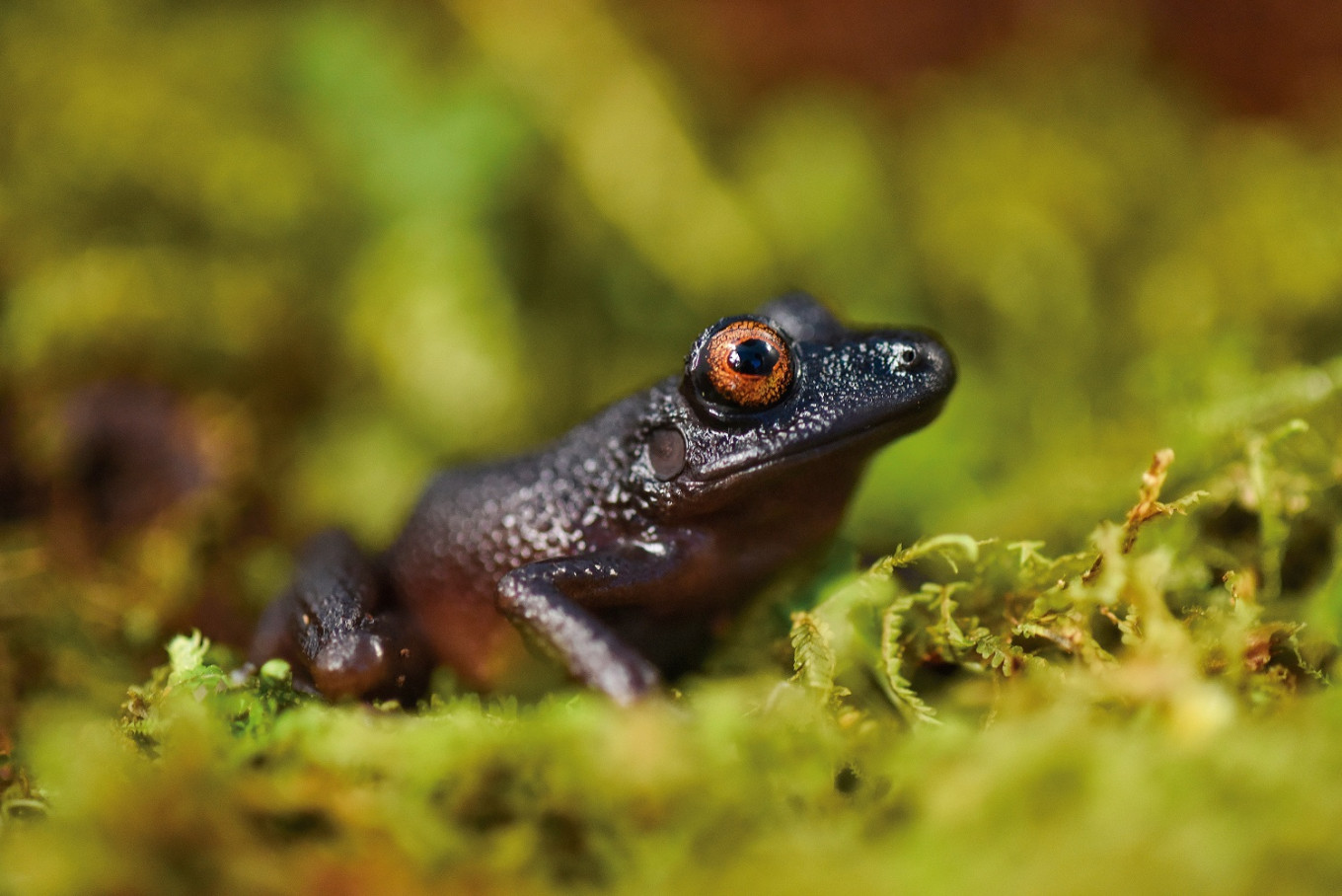Popular Reads
Top Results
Can't find what you're looking for?
View all search resultsPopular Reads
Top Results
Can't find what you're looking for?
View all search resultsNew and rediscovered species found in pristine Andes of Bolivia
A scientific expedition high in the Bolivian Andes revealed 20 species new to science, including "lilliputian frog" plus four rediscovered species including the "devil-eyed frog" previously thought to be extinct.
Change text size
Gift Premium Articles
to Anyone
 The 'devil-eyed' frog (Oreobates zongoensis), discovered by a scientific expedition in the high Bolivian Andes that revealed a new species to science is seen in this handout photo in Zongo, La Paz, Bolivia, on March 21, 2017. (Courtesy of Steffen Reichle of Conservation International/Handout via REUTERS)
The 'devil-eyed' frog (Oreobates zongoensis), discovered by a scientific expedition in the high Bolivian Andes that revealed a new species to science is seen in this handout photo in Zongo, La Paz, Bolivia, on March 21, 2017. (Courtesy of Steffen Reichle of Conservation International/Handout via REUTERS)
A
scientific expedition high in the Bolivian Andes revealed 20 species new to science, including "lilliputian frog" plus four rediscovered species including the "devil-eyed frog" previously thought to be extinct, Conservation International said.
The expedition was led by the environmental group and the government of capital city La Paz. It included 17 scientists who went to the Chawi Grande, a locality belonging to the Huaylipaya indigenous community near La Paz.
"The remarkable rediscovery of species once thought extinct, especially so close to the city of La Paz, illustrates how sustainable development that embraces conservation of nature can ensure long-term protection of biodiversity," Conservation International said in a statement.
The lilliputian frog measures only about 10 millimeters in length, making it one of the smallest amphibians in the world.
"Due to their tiny size and habit of living in tunnels beneath the thick layers of moss in the cloud forest, they were difficult to find even by tracking their frequent calls," the environmental group said.
Read also: Scientists discover 30 new species in Galapagos depths
Four new butterfly species were also discovered, including two species of "metalmark butterflies", which feed on flower nectar in open areas and forest clearings.
The "devil-eyed frog, which was previously known only from a single individual observed more than 20 years ago, was found to be relatively abundant in the cloud forest," the group said.
Previous expeditions attempting to find this black frog with red eyes concluded empty-handed.
Also rediscovered was the "Alzatea verticillata," a small flowering tree that was previously known only from a single record in Bolivia and was found on this expedition after 127 years.
"Numerous expeditions had been made in Bolivia to find this mysterious tree over the years. All failed until now," Conservation International said.










